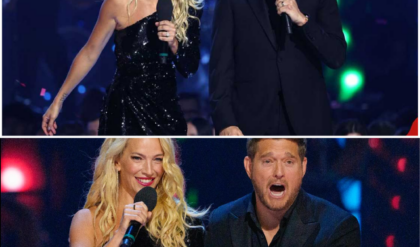The 2015 Hollywood remake Secret in Their Eyes, directed by Billy Ray, has sparked intense debate among cinephiles: does it surpass its 2009 Argentine predecessor, El Secreto de Sus Ojos, directed by Juan José Campanella? Both films, rooted in Eduardo Sacheri’s novel La Pregunta de Sus Ojos, weave a gripping tale of obsession, justice, and unresolved trauma, centered on a decades-old murder case. While the original won the 2010 Oscar for Best Foreign Language Film, the American remake, starring Nicole Kidman, Chiwetel Ejiofor, and Julia Roberts, offers a bold reinterpretation that, in many ways, delivers a more emotionally intense and structurally refined thriller. This article analyzes the 2015 Secret in Their Eyes, comparing it to the original, highlighting its standout elements, and exploring why its suspense and emotional depth make it a superior adaptation.
The Core Narrative: A Shared Foundation
Both films follow a retired investigator haunted by an unsolved murder case, intertwining a criminal investigation with personal loss and unrequited love. In the 2009 Argentine film, Benjamín Espósito (Ricardo Darín), a former court clerk, revisits a 1974 rape and murder case in Buenos Aires, reflecting on his unexpressed love for his colleague Irene (Soledad Villamil) and the case’s lingering impact. The 2015 remake shifts the setting to post-9/11 Los Angeles, with Ray Kasten (Chiwetel Ejiofor), a former FBI agent, re-investigating the 2002 murder of Carolyn Cobb (Zoe Graham), the daughter of his colleague Jess Cobb (Julia Roberts). His pursuit is complicated by his feelings for Claire Sloane (Nicole Kidman), a district attorney, and the bureaucratic and moral challenges of a terrorism-obsessed era.
While the original spans 25 years, blending Argentina’s political turmoil under the military junta, the remake condenses the timeline to 13 years (2002–2015), grounding the story in the paranoia of post-9/11 America. Both films use flashbacks to juxtapose past and present, but the remake’s tighter timeline and cultural context create a more immediate, claustrophobic tension, amplifying the stakes of the investigation.
Structural Refinement: A Leaner, Meaner Thriller
The 2015 Secret in Their Eyes streamlines the original’s sprawling narrative, making it a more focused and suspenseful experience. The Argentine film, at 129 minutes, luxuriates in character development and historical context, with extended scenes exploring Espósito’s life and Argentina’s political decay. While this depth enriches the original, it occasionally slows the pacing, particularly in the middle act, where philosophical musings overshadow the thriller elements.
In contrast, the remake, running at 111 minutes, prioritizes momentum. Screenwriter Billy Ray, also the director, trims extraneous subplots, such as the original’s focus on Espósito’s alcoholic colleague, and sharpens the central mystery. The murder of Carolyn Cobb, revealed early as Jess’s daughter, raises the emotional stakes immediately, unlike the original, where the victim’s connection to the investigators is less personal. Flashbacks in the remake are seamlessly integrated, using visual cues like color grading (muted tones for 2002, warmer hues for 2015) to maintain clarity, whereas the original’s flashbacks sometimes feel disjointed due to their broader temporal scope.
The remake’s pacing excels in its relentless build-up to the climax. Key scenes, such as Ray’s unauthorized pursuit of suspect Marzin (Joe Cole) in a crowded Dodger Stadium chase, pulse with urgency, leveraging post-9/11 anxieties about surveillance and terrorism. This sequence, absent in the original, showcases Ray’s directorial flair for kinetic action, making the remake feel more cinematic and less contemplative than Campanella’s film.
Emotional Intensity: A Star-Driven Triumph
The remake’s greatest strength lies in its performances, which deliver raw, visceral emotion that often outshines the original’s subtlety. Chiwetel Ejiofor’s Ray Kasten is a tormented figure, driven by guilt over Carolyn’s death and his inability to bring her killer to justice. Ejiofor’s nuanced portrayal—marked by haunted eyes and quiet desperation—grounds the film’s emotional core. Ricardo Darín’s Espósito, while masterful, leans toward stoic introspection, reflecting the original’s more restrained tone.
Julia Roberts, as Jess Cobb, delivers a career-defining performance that elevates the remake. Her depiction of a grieving mother turned hollow by loss is shattering, particularly in a morgue scene where Jess confronts her daughter’s body. Stripped of makeup and radiating raw anguish, Roberts transcends the original’s equivalent character, Liliana’s husband Ricardo (Pablo Rago), whose grief is less central. Critics, including Variety’s Justin Chang, praised Roberts for her “fearless, vanity-free performance,” noting its power to anchor the film’s emotional weight.
Nicole Kidman’s Claire Sloane, the district attorney torn between duty and her feelings for Ray, adds a layer of icy sophistication. Her chemistry with Ejiofor crackles with unspoken tension, mirroring the original’s Espósito-Irene dynamic but with a sharper edge of professional conflict. Soledad Villamil’s Irene is warmer but less commanding, making Kidman’s portrayal a standout for its blend of authority and vulnerability. The remake’s trio—Ejiofor, Roberts, and Kidman—creates a dynamic interplay that intensifies the narrative, surpassing the original’s more subdued ensemble.
Suspense and Twists: Heightened Stakes in the Remake
The 2015 film amplifies the suspense through its reimagined twists and post-9/11 context. In the original, the murderer, Isidoro Gómez, is released due to political corruption, a reflection of Argentina’s junta era. The remake replaces this with a terrorism-driven plot: Marzin, the prime suspect, is a potential informant in a post-9/11 counterterrorism operation, forcing Ray and Claire to confront bureaucratic resistance from DA Martin Morales (Alfred Molina). This shift grounds the story in a uniquely American moral dilemma, where national security trumps personal justice, adding a layer of contemporary relevance absent in the original.
The remake’s climactic twist, revealing Jess’s secret actions against Marzin, is more shocking and emotionally devastating than the original’s resolution. Without spoiling specifics, the 2015 film’s ending, set in a stark, isolated setting, delivers a gut-punch that lingers, with Roberts’ performance amplifying its impact. The original’s twist, while haunting, relies on a more philosophical revelation about memory and justice, which some viewers found less visceral. The remake’s tighter focus on personal vengeance over systemic corruption makes its suspense more immediate and accessible, particularly for audiences unfamiliar with the Argentine context.
Cinematic Craft: Visual and Thematic Enhancements
Billy Ray’s direction infuses the remake with a polished, noir-inspired aesthetic that enhances its thriller credentials. Cinematographer Daniel Moder uses shadowy lighting and tight close-ups to mirror Ray’s obsession, contrasting with the original’s brighter, more naturalistic palette. The Dodger Stadium chase, a standout sequence, employs dynamic camera work and sound design to create heart-pounding tension, surpassing the original’s iconic soccer stadium scene, which, while visually striking, feels less urgent.
Thematically, the remake sharpens the novel’s exploration of obsession and justice. The post-9/11 setting adds a layer of paranoia, with Ray’s dogged pursuit clashing against a system prioritizing terrorism over individual crimes. This mirrors the original’s critique of political corruption but feels more relatable to modern audiences. The remake also deepens the theme of grief, particularly through Jess’s arc, making it a more emotionally resonant narrative. While the original excels in its historical specificity, the remake’s universal themes of loss and retribution resonate more broadly.
Critical Reception and Audience Response
Upon release, the 2015 Secret in Their Eyes received mixed reviews, with a 39% approval rating on Rotten Tomatoes compared to the original’s 91%. Critics like The Guardian’s Mark Kermode argued that the remake lacked the original’s cultural depth, while others, like The Hollywood Reporter’s Todd McCarthy, praised its “tightly wound” pacing and performances. Audience reactions, as seen on platforms like Reddit, often favor the remake for its emotional intensity and star power, though purists defend the original’s nuanced storytelling.
The remake’s box office performance was modest, grossing $34 million against a $19.5 million budget, compared to the original’s $35 million on a lower budget. However, its availability on streaming platforms like Netflix has garnered renewed appreciation, with viewers citing its gripping pace and Roberts’ standout performance as reasons to revisit it.
Why the Remake Surpasses the Original
The 2015 Secret in Their Eyes outshines its predecessor through its streamlined narrative, heightened emotional stakes, and stellar performances. The original’s strength lies in its cultural specificity and Darín’s subtle portrayal, but its slower pacing and philosophical tangents can dilute its thriller elements. The remake, by contrast, delivers a taut, emotionally charged narrative that leverages its post-9/11 context to create immediate suspense. Ejiofor, Roberts, and Kidman elevate the material, with Roberts’ raw grief and Kidman’s restrained intensity outpacing the original’s ensemble.
The remake’s tighter timeline and focus on personal stakes make it more accessible, while its noir aesthetic and dynamic set pieces, like the Dodger Stadium chase, enhance its cinematic appeal. The climactic twist, driven by Jess’s arc, lands with greater emotional force, making the remake a more visceral experience. While the original remains a masterpiece of Argentine cinema, the 2015 film’s universal themes, polished execution, and unforgettable performances make it a superior thriller for a broader audience.
Conclusion: A Remake That Stands Tall
Secret in Their Eyes (2015) is a rare remake that not only honors its source material but arguably surpasses it. By tightening the narrative, amplifying the emotional and suspenseful stakes, and leveraging a powerhouse cast, Billy Ray crafts a thriller that resonates deeply in a post-9/11 world. Nicole Kidman, Chiwetel Ejiofor, and Julia Roberts deliver performances that elevate the film beyond its Argentine predecessor, while its visual flair and thematic focus on grief and justice make it a standout. For viewers seeking a gripping, emotionally charged mystery, the 2015 Secret in Their Eyes proves that a remake can outshine its original, offering a secret worth uncovering.





